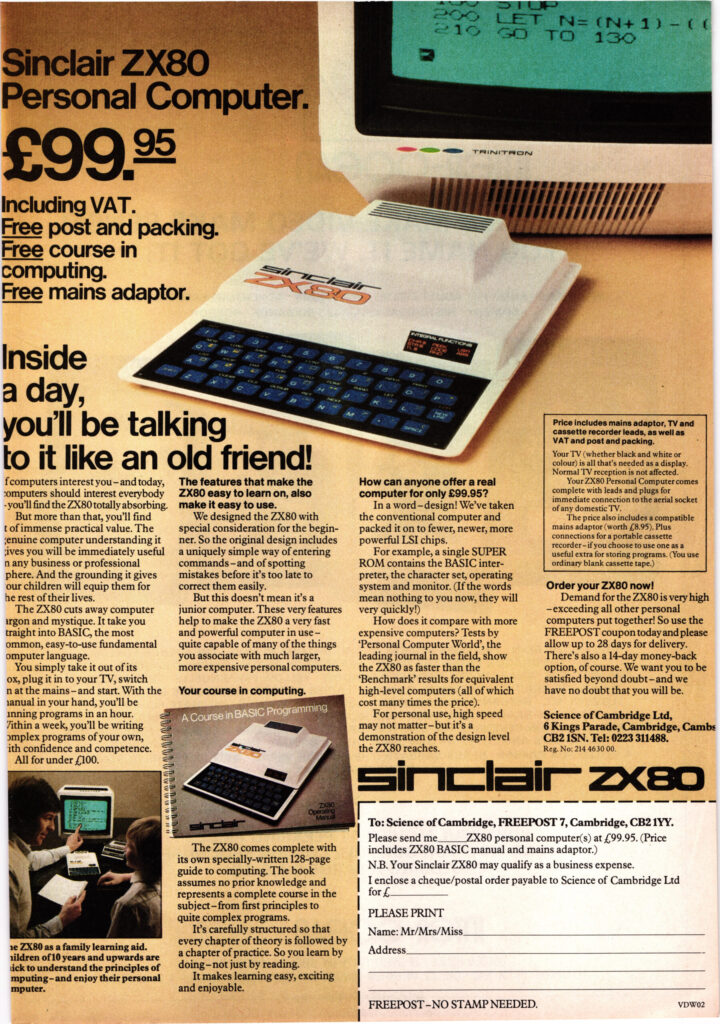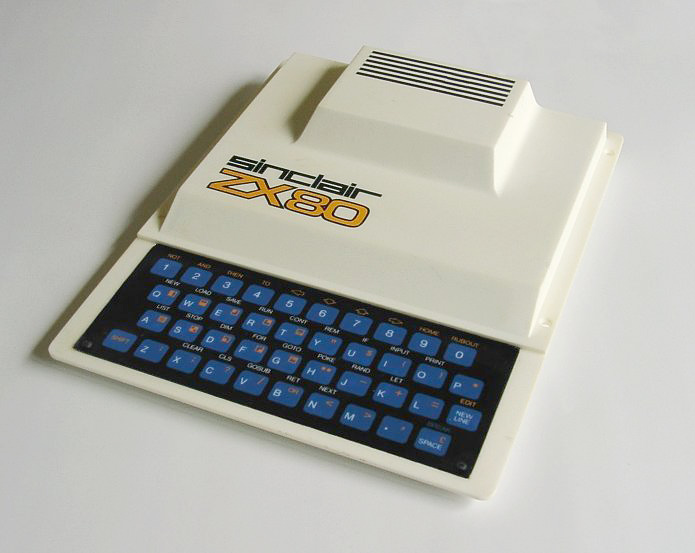The Sinclair ZX80 is a true pioneer in the world of personal computing. Released in 1980, this compact and affordable machine was one of the first truly accessible personal computers for the general public.
At first glance, the ZX80 might not seem like much. It boasts a mere 1K of RAM and a Z80 microprocessor running at a speed of 3.25 MHz. The monochrome display and basic keyboard also leave something to be desired. However, despite its limitations, the ZX80 was a revolutionary device that helped to make personal computing a reality for many people who otherwise couldn’t afford it.
One of the most impressive things about the ZX80 is its affordability. At a price point of just £79.95 (around $104 USD), it was a fraction of the cost of other personal computers on the market at the time. This made it accessible to a wider range of people, including students, hobbyists, and small business owners.
Despite its limited memory and processing power, the ZX80 was capable of running a basic version of the BASIC programming language. This allowed users to create their own programs and games, and even develop small business applications. The ZX80 also had the ability to connect to a tape recorder for storage, which was a cost-effective solution at the time.
The ZX80’s compact design made it highly portable, which was a significant advantage over other personal computers of its time. This made it ideal for use in classrooms, as well as for people who needed to take their computer on the go.
While the ZX80 had its share of limitations, it was a groundbreaking device that helped to pave the way for more advanced personal computers. Its affordability and portability made it accessible to a wider range of people, and its ability to run basic programming languages allowed users to create their own programs and games. The ZX80’s legacy lives on today, as it continues to inspire nostalgia in those who remember using it and respect in those who appreciate its historical significance.
In conclusion, the Sinclair ZX80 may not be the most advanced computer available today, but it was a revolutionary device in its time. It helped to pave the way for personal computing and it’s an important piece of technology history. While it may not have all the features and capabilities of more modern computers, it’s still a fun and interesting machine to use and it can be a great learning tool for those interested in the history of computing.
Waiting for my bus home I would often go to the nearest shop to get some smacks and a drink, one day I picked up a magazine called Video World (the magazine of electronic living) August issue 1979 and found it a very interesting read so ended up buying the magazine each month, in one of the early issues 1981 February I read this advert.

After seeing this advert I was intrigued and at £100 I could save up quite easily, so a month or so later after saving up enough I filled out the form and sent it off with a postal order cheque and waited patiently for it’s arrival.
What seemed like forever the ZX80 was delivered and I quickly opened the box to find it well protected in a poly box, It came with a manual, a power brick and a cable to connection to TV and a cable to connect to a cassette deck, these plugged in to the connections on the back, also on the back there was also an expansion port that I never used.
After connecting everything up and turning it on I was presented with a cursor on a completely blank screen very scary, but the Basic programming manual gave me everything I needed to know and I learnt quite a bit about basic programming but due to the limitations of the system where it couldn’t compute and display anything on the screen at the same time, the display would go blank when running a programs and even flickered every time a key is pressed, but it didn’t stop me writing lines of code from the magazines that started to pop up, this is where I learnt how bad my typing was as I made loads of errors and spend most of my time looking back on the lines of code to find spelling errors or misplaced characters it was fun learning and typing hundreds of lines of code
From the Adverts
The unique and valuable components of the Sinclair 2X80.
Quite apart from its exceptionally low price, the ZX80 had two uniquely advanced components: the Sinclair
BASIC lnterpreter; and the Sinclair teach yourself BASIC manual. The unique Sinclair BASIC interpreter offers remarkable programming advantages:
- Unique ‘one-touch’ key word entry: the ZX80 eliminates a great deal of tiresome typing. Key words (RUN, PRINT, LIST, etc.) have their own single-key entry.
- Unique syntax check. Only lines with correct syntax are accepted into programs. A cursor identifies errors immediately. This prevents entry of long and complicated programs with faults only discovered when you try to run them.
- Excellent string-handling capability, takes up to 26 string variables of any length. All strings can undergo all relational tests (e g comparison). The ZX80 also has string input to request a line of text when necessary. Strings do not need to be dimensioned.
- Up to 26 single dimension arrays.
- FOR/NEXT loops nested up to 26
- Variable names of any length.
- BASIC language also handles full Boolean arithmetic, conditional expressions, etc.
- Exceptionally powerful edit facilities, allows modification of existing program lines.
- Randomise function, useful for games and secret codes, as well as more serious applications.
- Timer under program control.
- PEEK and POKE enable entry of machine code instructions USR causes jump to a user’s machine language sub-routine.
- High-resolution graphics with 22 standard graphic symbols.
- All characters printable in reverse under program control.
- Lines of unlimited length.
And if the specifications of the Sinclair ZX80 mean little to you don’t worry. They’re all explained in the specially written 128-page book free with every kit! The book makes learning easy, exciting and enjoyable, and represents a complete course in BASIC programming from first principles to complex programs. A hardware manual is also included with every kit.
I’d like to think I would still have it in it’s box if I hadn’t lent it out and got it back weeks later broken.
